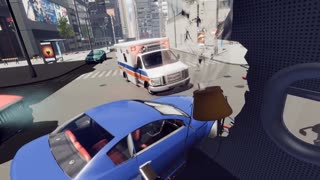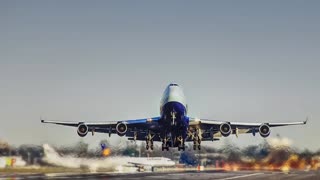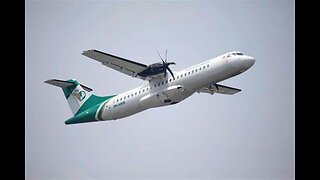Air Crash Investigation: PIA Flight 8303
Pakistan International Airlines Flight 8303 was preparing for its regular commercial passenger flight to Jinnah International Airport, Karachi.
On board the flight were 91 passengers and 8 crew members. Among them were a Captain, a First Officer, and 6 flight attendants.
Flight 8303 took off from Lahore for its 90 minutes journey to Karachi.
The en-route part of the flight was uneventful.
Area Control of Karachi cleared the flight for arrival procedure and advised to expect ILS approach for runway 25L.
When the aircraft was over MAKLI, the crew contacted Karachi Approach and got clearance to descend 3000 ft.
To manage the descent and lose the additional height, the crew disconnected the autopilot and selected “OPEN DES” mode via the FCU.
Speed brakes were extended.
ATC: sir orbit is available
But the aircraft continued its descent.
Again the approach controller advised the crew to discontinue the approach, but the crew did not follow.
Now the aircraft intercepted the localizer as well as the glide slope. Flaps 1 were selected at 243 knots.
For better understanding, Approach control cannot see the aircraft in the air, but they can follow them on their radar displays while Towers handle all takeoff, landing, and ground traffic because they are on the top and can see the aircraft.
This time the aircraft was communicating with Karachi Approach. For landing, the crew should contact to Tower but they did not. Instead Karachi Approach sought telephonic landing clearance from tower. Without observing the abnormality that the landing gears were not extended. The tower conveyed a landing clearance of the aircraft to Karachi Approach.
The aircraft touched the runway surface on its engines. Flight crew applied reverse engine power and initiated a braking action. Both engines scrubbed the runway at various locations causing damage to both of them.
The Tower observed the scrubbing of engines with the runway but did not convey this abnormality to the aircraft and instead conveyed to the “Karachi Approach” on telephone. “Karachi Approach” also did not relay this abnormality to the flight crew.
The landing was discontinued and a go-around was executed.
Both engines failed one by one. Ram Air Turbine was deployed to power the essential systems.
The aircraft was unable to maintain required height due to engine complications. The aircrew declared the emergency situation that both engines were lost, and transmitted
a “Mayday Call”.
The plane crashed in Model Colony, a densely populated residential area of Karachi, just 1340 meters short of runway 25L. 98 people perished including 1 on the ground. Miraculously, 2 people on the plane and 7 on the ground survived with injuries.
Investigation
The investigation is being conducted by Aircraft Accident Investigation Board Pakistan with the cooperation of Airbus,National Transportation Safety Board United States and Bureau of Enquiry and Analysis for Civil Aviation Safety France.
The preliminary report was published on 22 June 2020. According to the report, the air traffic controller on duty and flight crew's actions were reported to have been contributing factors which ultimately caused the crash. In the report, the Captain was cited as being "overconfident". As well as the report suggest that during the approach, the pilots were preoccupied in a non-operational conversation about the COVID-19 pandemic.
This was just a preliminary report. Right now, It is not ok to blame someone for the accident. There might be some technical difficulties in the aircraft. The aircraft remained on ground for 46 days during Covid 19 quarantine, due to restrictions on flying operations. The maintenance records within that 46 days need to be checked to ensure that the aircraft was air worthy.
#PIA #flight8303 #pia8303 #aircrash #planecrash #aviation #airplane
-
 14:46
14:46
The Alex Jones Show Infowars
8 months agoThe F-35 Crash Site Revealed: Is This 9/11 Pennsylvania Crash Site And Pentagon Plane All
8191 -
 0:16
0:16
Marefaradio
11 months agoPIA flight
2 -
 1:37
1:37
vincent98
2 years agoairplane crash
1273 -
 9:59
9:59
Infowars War Room With Owen Shroyer
9 months agoPrigozihn Surfaces: Raises Questions On His Airplane Crash Death
2.57K3 -
 0:37
0:37
WORLD SOCIAL
5 years agoplane crash from air disasters
60 -
 0:50
0:50
SpaceCowboy TV
1 year agoBREAKING: Inside Yeti plane Airlines flight Crash
3282 -
 0:28
0:28
RT
4 months agoInvestigators work at site of Il-76 plane crash in Belgorod Region
3.78K6 -
 1:20:40
1:20:40
HarrisCrashPrediction.com
5 months agoI am predicting: Harris' plane will crash on Jan 7 = MISSING FLIGHT PROPHECY
3 -
 0:20
0:20
WFTX
3 years agoFAA investigating small plane crash
78 -
 0:27
0:27
WSYM
5 years agoFAA won't investigate fatal plane crash
6